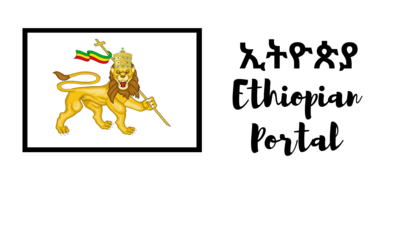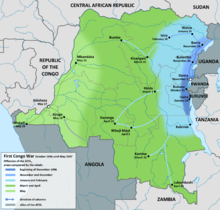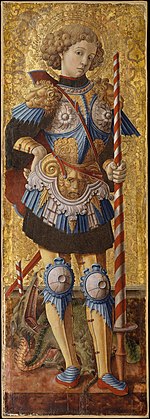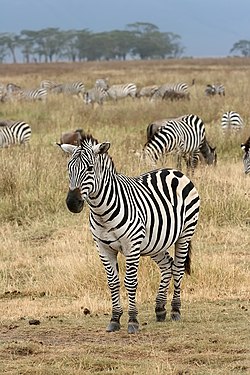Portal:Ethiopia
Introduction
Federal Democratic Republic of Ethiopia የኢትዮጵያ ፌደራላዊ ዴሞክራሲያዊ ሪፐብሊክ (Amharic) | |
|---|---|
| Anthem: ወደፊት ገስግሺ ፣ ውድ እናት ኢትዮጵያ (English: "March Forward, Dear Mother Ethiopia") | |
 | |
| ISO 3166 code | ET |
Ethiopia, officially the Federal Democratic Republic of Ethiopia, is a landlocked country located in the Horn of Africa region of East Africa. It shares borders with Eritrea to the north, Djibouti to the northeast, Somalia to the Northeast, East and Southeast, Kenya to the South, South Sudan to the West, and Sudan to the Northwest. Ethiopia covers a land area of 1,112,000 square kilometres (472,000 sq. miles). , it is home to around 129 million inhabitants, making it the 13th-most populous country in the world, the 2nd-most populous in Africa after Nigeria, and the most populated landlocked country on Earth. The national capital and largest city, Addis Ababa, lies several kilometres west of the East African Rift that splits the country into the African and Somali tectonic plates.
Anatomically modern humans emerged from modern-day Ethiopia and set out for the Near East and elsewhere in the Middle Paleolithic period. Southwestern Ethiopia has been proposed as a possible homeland of the Afroasiatic language family. In 980 BC, the Kingdom of D'mt extended its realm over Eritrea and the northern region of Ethiopia, while the Kingdom of Aksum maintained a unified civilization in the region for 900 years. Christianity was embraced by the kingdom in 330, and Islam arrived by the first Hijra in 615. After the collapse of Aksum in 960, the Zagwe dynasty ruled the north-central parts of Ethiopia until being overthrown by Yekuno Amlak in 1270, inaugurating the Ethiopian Empire and the Solomonic dynasty, claimed descent from the biblical Solomon and Queen of Sheba under their son Menelik I. By the 14th century, the empire had grown in prestige through territorial expansion and fighting against adjacent territories; most notably, the Ethiopian–Adal War (1529–1543) contributed to fragmentation of the empire, which ultimately fell under a decentralization known as Zemene Mesafint in the mid-18th century. Emperor Tewodros II ended Zemene Mesafint at the beginning of his reign in 1855, marking the reunification and modernization of Ethiopia. (Full article...)
Selected article -
The First Congo War, also nicknamed Africa's First World War, was a civil war and international military conflict which lasted from 24 October 1996 to 16 May 1997 and took place mostly in Zaire (which was renamed the Democratic Republic of the Congo in the process), with major spillovers into Sudan and Uganda. The conflict culminated in a foreign invasion that replaced Zairean president Mobutu Sese Seko with the rebel leader Laurent-Désiré Kabila. Kabila's unstable government subsequently came into conflict with his allies, setting the stage for the Second Congo War in 1998–2003.
Following years of internal strife, dictatorship and economic decline, Zaire was a dying state by 1996. The eastern parts of the country had been destabilized due to the Rwandan genocide which had perforated its borders, as well as long-lasting regional conflicts and resentments left unresolved since the Congo Crisis. In many areas state authority had in all but name collapsed, with infighting militias, warlords, and rebel groups (some sympathetic to the government, others openly hostile) wielding effective power. The population of Zaire had become restless and resentful of the inept and corrupt regime; the Zairean Armed Forces were in a catastrophic condition. Mobutu, who had become terminally ill, was no longer able to keep the different factions in the government under control, making their loyalty questionable. Furthermore, the end of the Cold War meant that Mobutu's strong anti-communist stance was no longer sufficient to justify the political and financial support he had received from the capitalist powers – his regime, therefore, was essentially politically and financially bankrupt. (Full article...)Selected biography -
General images -
Related portals
Geography
Countries
WikiProjects
Main WikiProject
Related WikiProjects
Africa • Countries • Eritrea • African military history task force
Things you can do
- Visit the Ethiopian Wikipedians' notice board.
- The noticeboard is the central forum for information and discussion on editing related to Ethiopia.
- Comment at the Ethiopian deletion sorting page.
- This page lists deletion discussions on topics relating to Ethiopia
Selected pictures
Did you know -

- ... that Tsadkan Gebretensae, one of the top commanders of Tigray forces in the conflict against the Ethiopian government, previously served as chief of staff of the Ethiopian National Defense Force?
- ... that medieval Ethiopian kings claimed to be descended from Solomon?
- ... that Quintin Johnstone advocated giving control of an American-governed law school to native Ethiopians?
- ... that Aguil Chut-Deng took 22 child refugees from South Sudan to Ethiopia during civil war so that they could attend school?
- ... that Liberian paramount chief Tamba Taylor worked as a tailor and claimed to have sewn clothes for Ethiopian emperor Haile Selassie and Ghanaian president Kwame Nkrumah?
- ... that the government of Ethiopia's SNNP Region supported local governments calling for a referendum to secede from the region?
In the news
- 10 June 2024 –
- Forty-nine migrants, mostly from Ethiopia and Somalia, are killed and 140 are missing after their boat capsizes off the coast of Yemen. (Al Jazeera)
Categories
Topics
Other Ethiopia-connected Wikipedias
Wikimedia
The following Wikimedia Foundation sister projects provide more on this subject:
-
Commons
Free media repository -
Wikibooks
Free textbooks and manuals -
Wikidata
Free knowledge base -
Wikinews
Free-content news -
Wikiquote
Collection of quotations -
Wikisource
Free-content library -
Wikiversity
Free learning tools -
Wikivoyage
Free travel guide -
Wiktionary
Dictionary and thesaurus
Other portals






































































